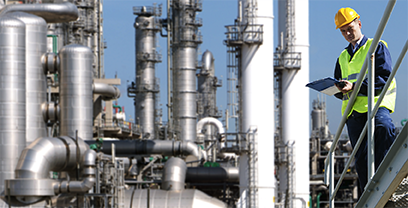An Iranian petrochemical company will export its first shipment to Europe after a few years of hiatus in exports due to US-led sanctions over Tehran’s nuclear energy program, reported iribnews on Saturday.
“Our company will export 2,000 metric tons of linear low-density polyethylene (LLDPE) in cylindrical bulk to Belgium,” said Mohsen Farahi, sales manager at Jey Petrochemical Company, indicating a resumption of petrochemical exports to European markets.
Following the administration’s order for the refineries and petrochemical facilities to stop producing gasoline, domestic petrochemical output has increased 5% and is expected to grow further in the coming years.
The production increase comes as based on a report by Business Monitor International published in November, the surge in capacity expected in 2015 will not be sustainable if feedstock supply is not forthcoming and markets do not absorb output.
While new plants may come on stream soon, BMI’s latest Iran petrochemicals report states that operation rates are likely to remain low and plants will be operating at a loss unless Iranian producers can pass on the full costs of production onto consumers in export markets.
According to the forecast, to operate at reasonable levels of capacity utilization, olefin output would have to increase by a third and polymers by a third, but the demand may not exist and may not have existed even without the sanctions regime.
Iran is portraying growth in exports and output as a sign that the industry is on the road to recovery. Although a thaw in Tehran’s relations with the West and improved external markets has boosted exports, production capacity utilization is still low. With the prospect of new plants coming on stream in 2015, the Iranian petrochemicals industry will continue to face poor performance, added the report.
The National Iranian Petrochemical Company (NIPC) recently said the country holds 21% of the Middle East’s petrochemical market, a 25% share in the production of petrochemicals in the region and is the second largest exporter in the Persian Gulf with exports largely destined for Asia.
Growth Related to Sanctions
Official figures show Iran’s petrochemical output stood at 22.8 million metric tons during the first half of the current Iranian year (March 21-September 22), which puts the country on course for 10% annual growth in output compared to the 40 million metric tons reported in 2013/2014. The lower rate of growth in value compared to volume suggests that Iran’s petrochemical production is still dominated by low value basic chemical products. With capacity utilization likely to average around 50%, significant growth is required for Iranian producers to approach a level regarded as commercially viable.
Iran’s petrochemical exports increased 5% year-on-year in the first half of the current Iranian year. In terms of value, the country hopes to export $12 billion of petrochemical products in the 2014/15 Iranian year. Iran’s petrochemicals export volumes increased 5% year-on-year to 7.8 million metric tons, with the value of exports rising 7% year-on-year to $5.1 billion. This appears to put Iran on course for matching the $10.7 billion of exports it notched in 2013/14, when the value of exports rose just 1%. As such, the target of $12 billion in exports this year is unlikely to be met. The total volume of exported goods was 14.5 million metric tons in 2013/14, down 4%. The report forecasts that Iran may reverse that decline, but not exceed it.
Iran stood fifth in the third quarter of 2014 in terms of petrochemical output, with a rating of 59.6 points, up 0.6 points since the previous quarter due to an improvement in market risk associated with strengthening exports and the country’s gradual improvement of diplomatic ties in the wake of nuclear negotiations with the five permanent members of the United Nations Security Council plus Germany. This places Tehran 0.5 points behind Doha. In the event that international sanctions are eased significantly, particularly in relation to access to European markets and investment, it is likely that the country could see its score improving in the coming quarters.
Likewise, failure to obtain a final agreement on the nuclear energy program could see the reversal of gains seen in recent quarters. In the long run, much will depend on the extent the Islamic Republic’s image improves in the international arena, and there is a risk that the sanctions regime may not be relaxed sufficiently to stimulate export growth to justify planned capacity expansion.
Therefore, the report said, Iran’s petrochemical sector is yet to feel the benefits of the easing of international sanctions.


